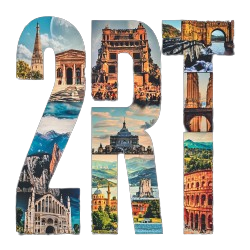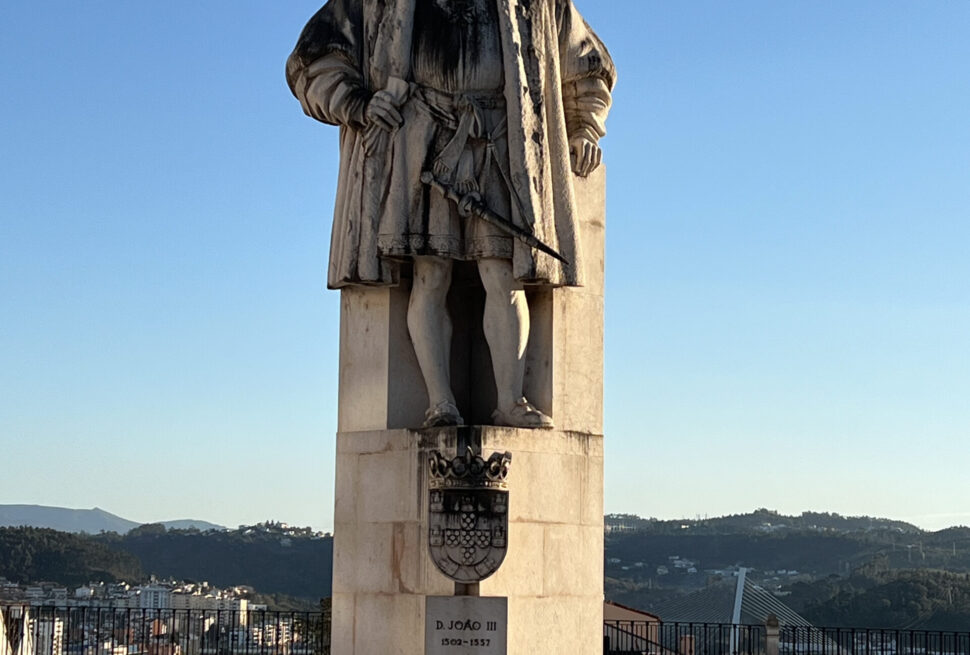THE FINAL STOP
Porto wasn’t our first stop in Portugal—it was our final city after an incredible road trip through the countryside. We had flown in from the U.S. to Madeira, then to Lisbon, before driving through Óbidos, Coimbra, and Lamego, savoring each town’s unique charm. By the time we reached Porto, we had already fallen in love with Portugal’s landscapes, wines, and history. But Porto? It was something else entirely.
FIRST IMPRESSIONS: A SHIFT FROM COUNTRYSIDE TO CITY
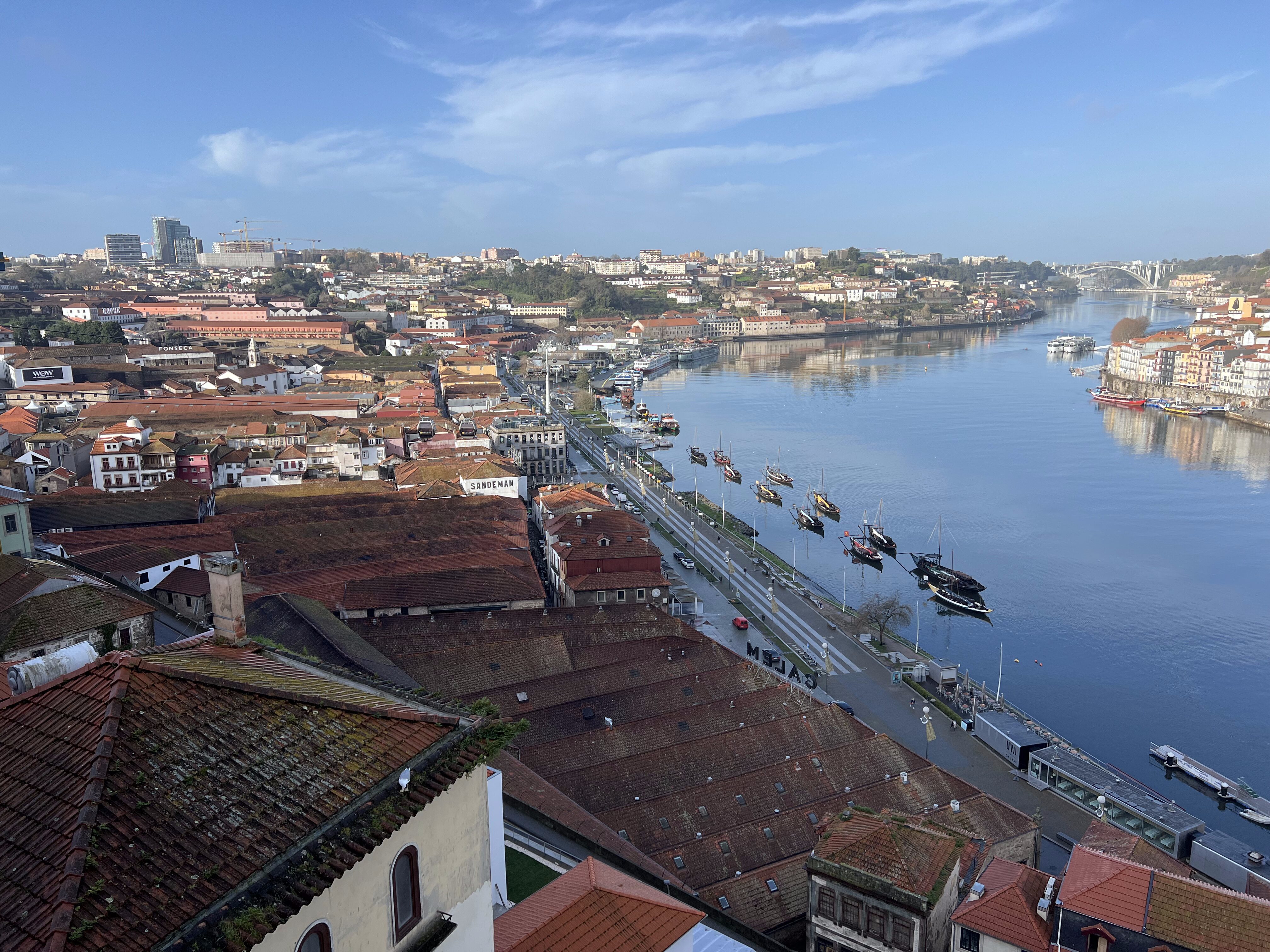
Porto felt so different from everything we had seen before. After days of winding country roads, vineyard-covered hills, and small historic towns, arriving in Porto was like stepping into another world—bustling, urban, and alive. The contrast caught us off guard. But once we reached the waterfront, everything changed.
The city’s heart beats strongest by the river. We walked along the Cais da Ribeira, losing ourselves in its maze of staircases and hidden alleys, stumbling into unexpected corners and vibrant squares. The famous colorful buildings lined the riverbank where cafés and restaurants spill onto the sidewalk, filled with laughter, music, and the scent of grilled seafood.
What struck me most about Porto was its authenticity. Despite being Portugal’s second-largest city, and a major tourist destination since UNESCO declared it a World Heritage Site in 1996, Porto has managed to maintain its working-class soul. I noticed a lot of locals going about their day in casual, comfortable clothing, which made it feel very genuine. Unlike bigger cities such as Lisbon, you don’t see many tailored Italian suits on the streets here.
STAYING AT HOTEL JAGUAR: WINE, HOSPITALITY & LUXURY RIDES
We stayed at Hotel Jaguar, which, despite being in the city, had a charm of its own. The view wasn’t spectacular, but the hospitality was. The staff welcomed us with samples of Port wine—a perfect introduction to Porto’s famous drink. And as if that wasn’t enough, they even provided free transportation to the center of the city in a Jaguar. We were sold.
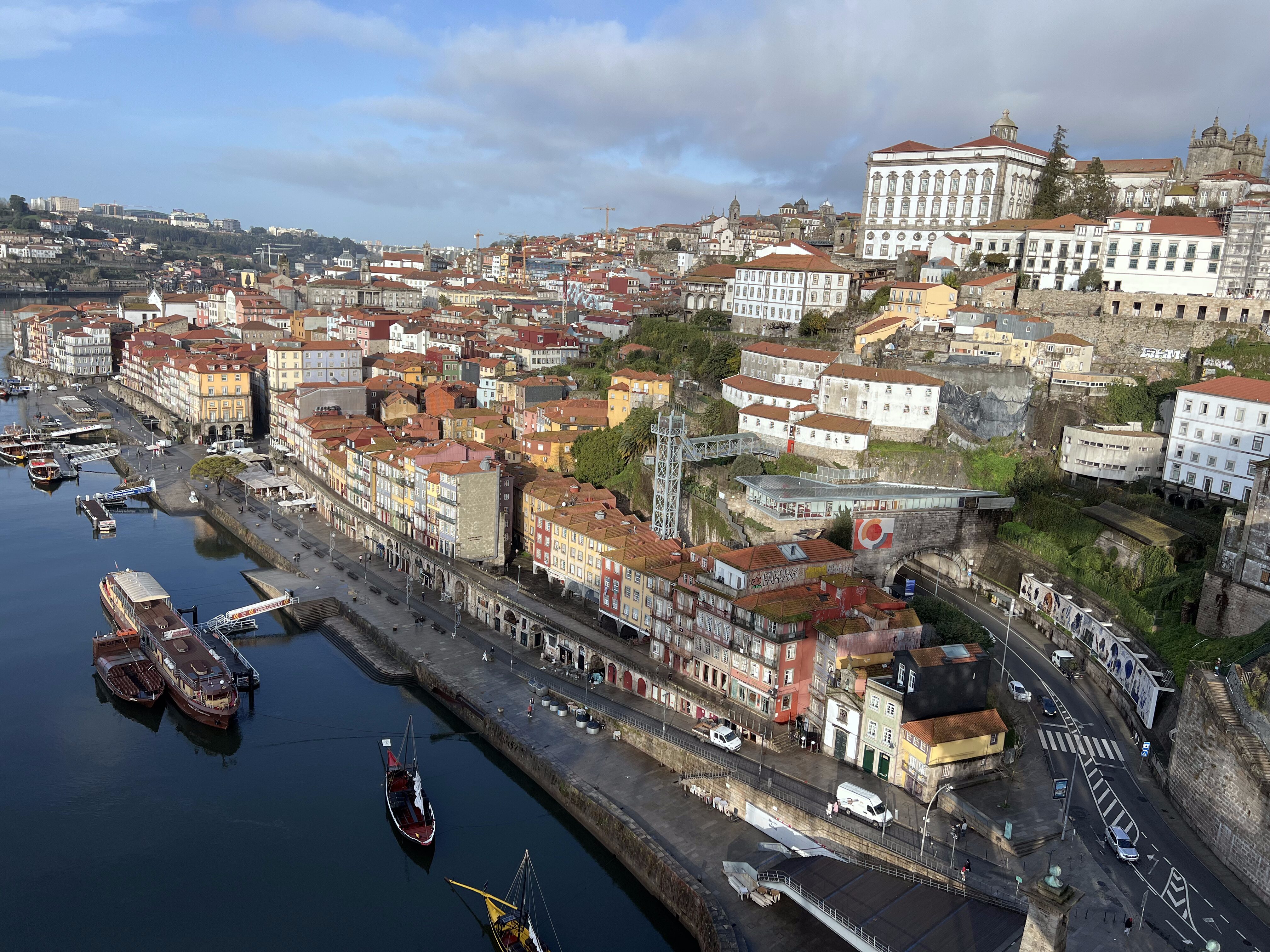
Looking back, I wish we’d booked accommodation closer to the Ribeira district. The area transforms from morning to night—quiet coffee sippers replace noisy diners, then evening revelers take over. Waking up to river views and falling asleep to the soft sounds of Fado music drifting through your window creates an entirely different Porto experience.
Several boutique hotels and guest houses now occupy the renovated historic buildings with their traditional azure tile façades. Places like Pestana Porto – A Brasileira offer rooms with river views and convenient access to Porto’s main attractions. For budget travelers, guesthouses like Ribeira do Porto Hotel provide affordable rooms without sacrificing location.
EXPLORING PORTO ON FOOT & SIPPING ON HISTORY
Since we had been driving for days, we ditched the car and explored Porto entirely on foot. We walked across the Dom Luís I Bridge, admiring the steel structure that stretched over the Douro River. This architectural marvel was designed by Théophile Seyrig, a student of Gustave Eiffel (yes, the Eiffel Tower guy), and completed in 1886. At 565 feet long and standing 150 feet above the water, this double-deck metal arch bridge connects Porto with Vila Nova de Gaia and offers spectacular views from both levels.
The bridge itself serves as Porto’s iconic landmark. Its upper deck carries the metro and pedestrians, while the lower level accommodates cars and pedestrians. Walking the upper deck isn’t for those with fear of heights—standing 200 feet above the river—but rewards brave souls with panoramic vistas spanning both riverbanks. I snapped countless photos, trying to capture the perfect angle of Porto’s colorful buildings cascading down to the water’s edge.
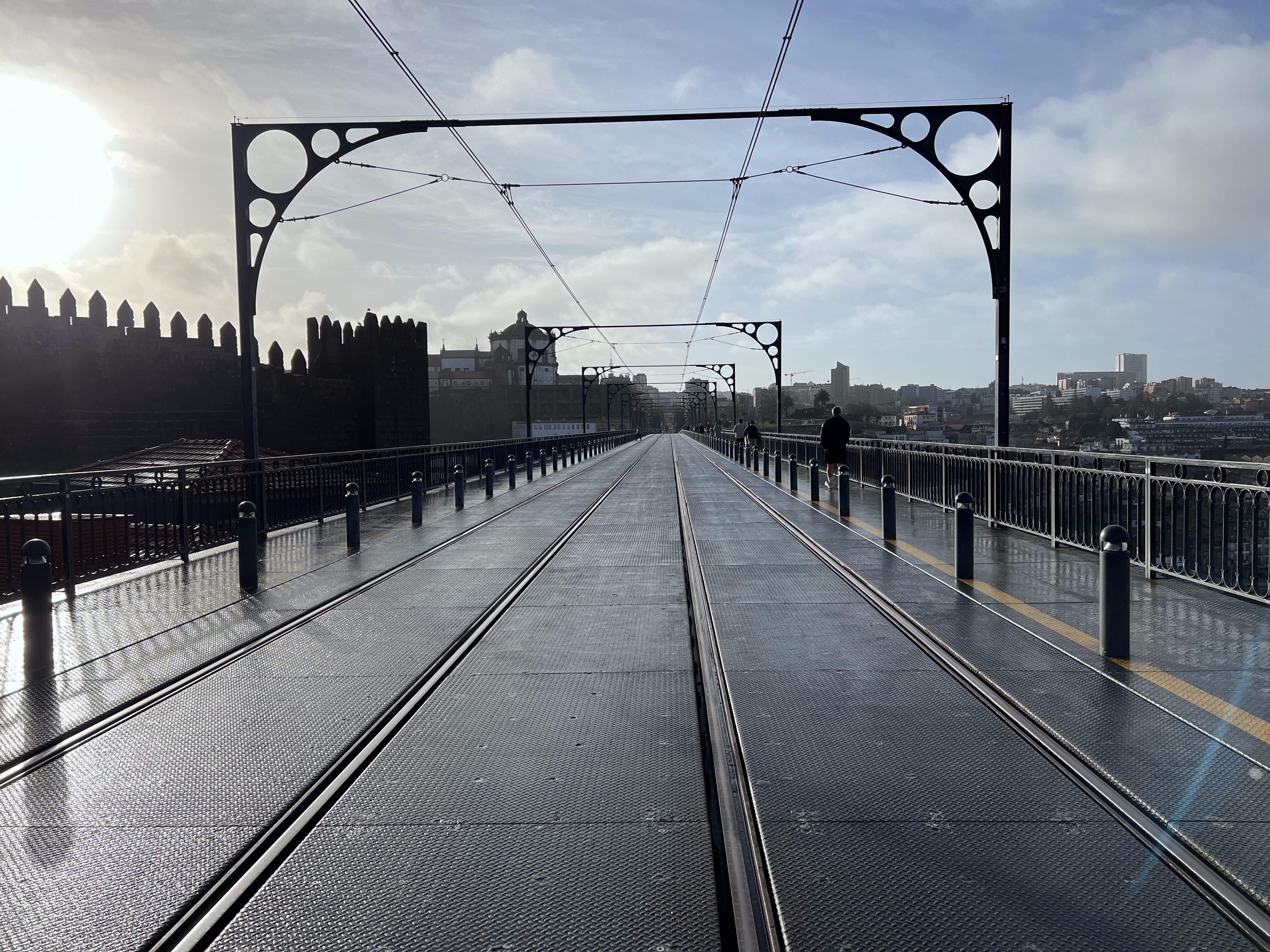
We visited Livraria Lello, one of the most beautiful bookstores in the world, and marveled at the intricate azulejo tiles inside São Bento Station. These blue and white tile panels tell Portugal’s story through detailed historical scenes—battles, royal ceremonies, and rural life unfold across the station walls. Each panel represents countless hours of artisan craftsmanship, creating a museum-worthy display in an active train station.
Of course, no visit to Porto is complete without Port wine. We sampled Sandeman, Taylor, Graham, and Fonseca—each sip a lesson in history and craftsmanship. The cellars (known locally as “lodges”) line the south bank of the Douro in Vila Nova de Gaia, where the cooler, north-facing hillside creates ideal aging conditions. Most offer guided tours explaining the fascinating port-making process before culminating in tastings of their distinctive styles.
At Taylor’s Port, we learned how this fortified wine evolved to survive long sea journeys. Portuguese merchants added brandy to stabilize the wine, unknowingly creating a new style that would become world-famous. We discovered the differences between ruby (fruit-forward, aged in large wooden vats) and tawny ports (nutty, caramel notes from extended barrel aging).
Our favorite meal? Grilled Bacalhau, Portugal’s beloved salted cod, smoky and rich with flavor. This traditional dish appears on nearly every menu in Porto, reflecting Portugal’s deep connection to seafaring and cod fishing traditions. Bacalhau requires soaking for 24-48 hours to remove excess salt before cooking, a practice dating back centuries when salt preservation made long-distance fish transport possible.
THE MESMERIZING RIBEIRA DISTRICT: PORTO’S HISTORIC HEART
We spent hours wandering the Ribeira district, Porto’s historic riverside quarter. Narrow medieval streets wind uphill from the water, revealing something new around each corner—tiny chapels tucked between buildings, hidden squares with moss-covered fountains, and local taverns serving vinho verde (young “green” wine) to regulars who’ve been coming for decades.
The buildings themselves tell stories. Many date back centuries, their facades decorated with elaborate azulejo tile patterns in blues, yellows, and whites. These ceramic tileworks originally served practical purposes—insulating homes and preventing moisture damage—before evolving into artistic expressions. We traced patterns with our fingers, noting how no two buildings shared identical designs.
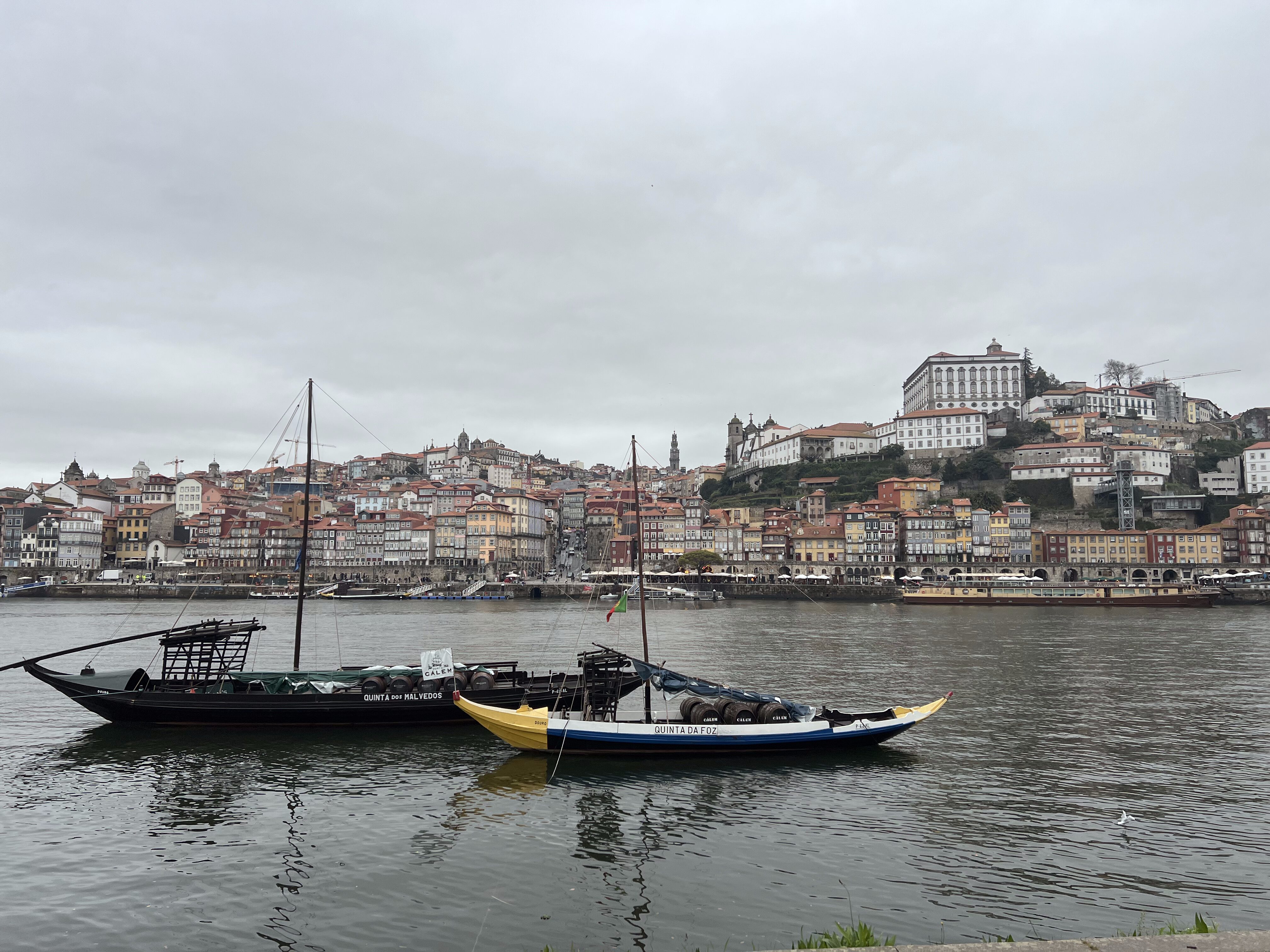
Ribeira’s social heart is Praça da Ribeira, often called “Square of the Riverside.” This sloping plaza opens to the river, filled with outdoor café tables and street performers. We spent hours here people-watching—tourists snapping photos, musicians playing traditional Portuguese guitar, artists sketching the Dom Luís I Bridge framed by colorful buildings. As evening approached, the square’s energy shifted from daytime bustle to romantic evening ambiance, with candlelit tables and the sound of glasses clinking.
DOURO VALLEY: A RAINY, WINE-FILLED ESCAPE
One of the biggest reasons we chose Porto was its proximity to the Douro Valley, the birthplace of Port wine. Unfortunately, the rain kept us from doing a river cruise, but we made the most of it.
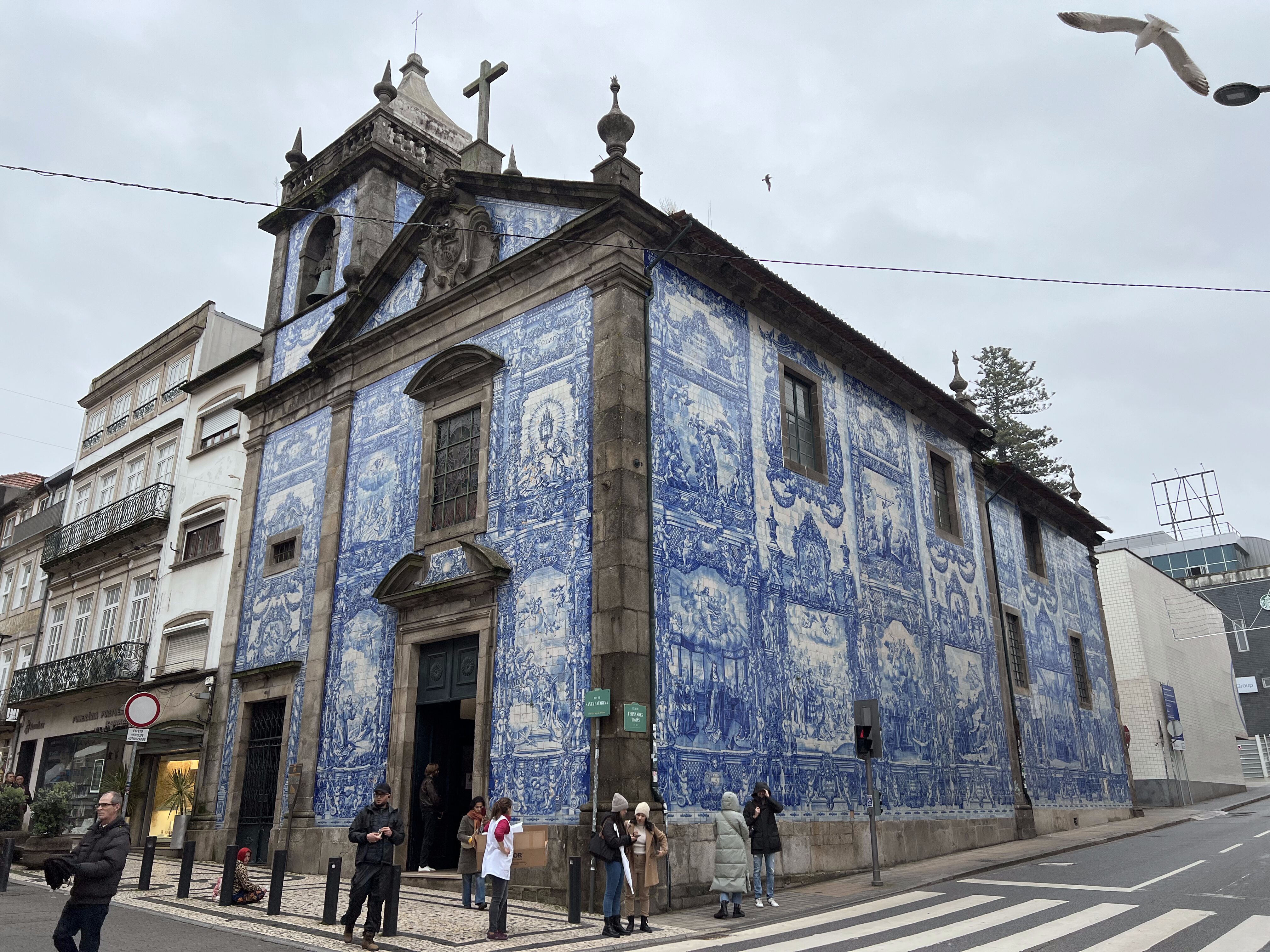
At Quinta Santa Eufemia, one of the oldest wineries, we skipped the guided tour but indulged in a wine tasting steeped in history—a vineyard once tied to the church, with centuries-old traditions still in place. The quinta (estate) sits high on terraced slopes, where vines grow in schist soil so rocky that many vineyards can only be worked by hand. These difficult growing conditions force vines to send roots deep for water and nutrients, producing concentrated, flavorful grapes.
We learned about the Douro’s classification system, established in 1756, making it the world’s oldest demarcated wine region. Stone markers called “marcos” still stand throughout the valley, indicating boundaries set over 250 years ago. The estate’s ancient lagares—granite troughs where workers traditionally stomped grapes by foot—remain functional, used for their most premium wines during harvest.
At Aneto Wines in Penajoia, we took a guided tour, learning about the delicate process that turns grapes into liquid gold. The winemaker explained how they blend traditional methods with modern techniques—temperature-controlled fermentation tanks stand beside century-old oak barrels. They specialize in both Port and DOC Douro table wines, showcasing how the same terroir produces diverse styles depending on vinification methods. Naturally, we left with bottles in hand.
Despite missing out on a river cruise, our rainy day exploration revealed a different side of the valley. Mist draped across terraced vineyards created ethereal landscapes. The Douro looks different in rain—mysterious, ancient, almost primeval. Water droplets magnified vibrant vineyard colors against dark schist walls. Winter vines, stripped of leaves, revealed their twisted, sculptural forms climbing impossibly steep hillsides.
UNEXPECTED MOMENTS & FAVORITE MEMORIES
One surprise? The pouring rain in Porto. We had expected cool weather in January, but not the relentless downpours.
However, it added a certain charm to everything. Picture this: slick cobblestone streets, quick dashes into cozy cafés, and the warmth of wine and laughter filling the air. The rain actually unveiled some unexpected beauty. The colorful buildings reflected in the puddles all over Ribeira’s squares, and the steamy café windows created cozy scenes as people sought refuge. We also had the chance to appreciate the traditional Rabelo boats along the Douro River, which gave us a sense of the region’s history. These boats used to carry Port wine from Douro Valley vineyards to Porto’s cellars.
One place that we may have missed if it had been sunny was the Palácio da Bolsa. The Arabian Hall, with its Moorish-inspired gold leaf decorations and stained glass, was especially stunning and a testament to Portugal’s diverse cultural influences. We also explored Clérigos, which is anchored by the Clérigos Tower.
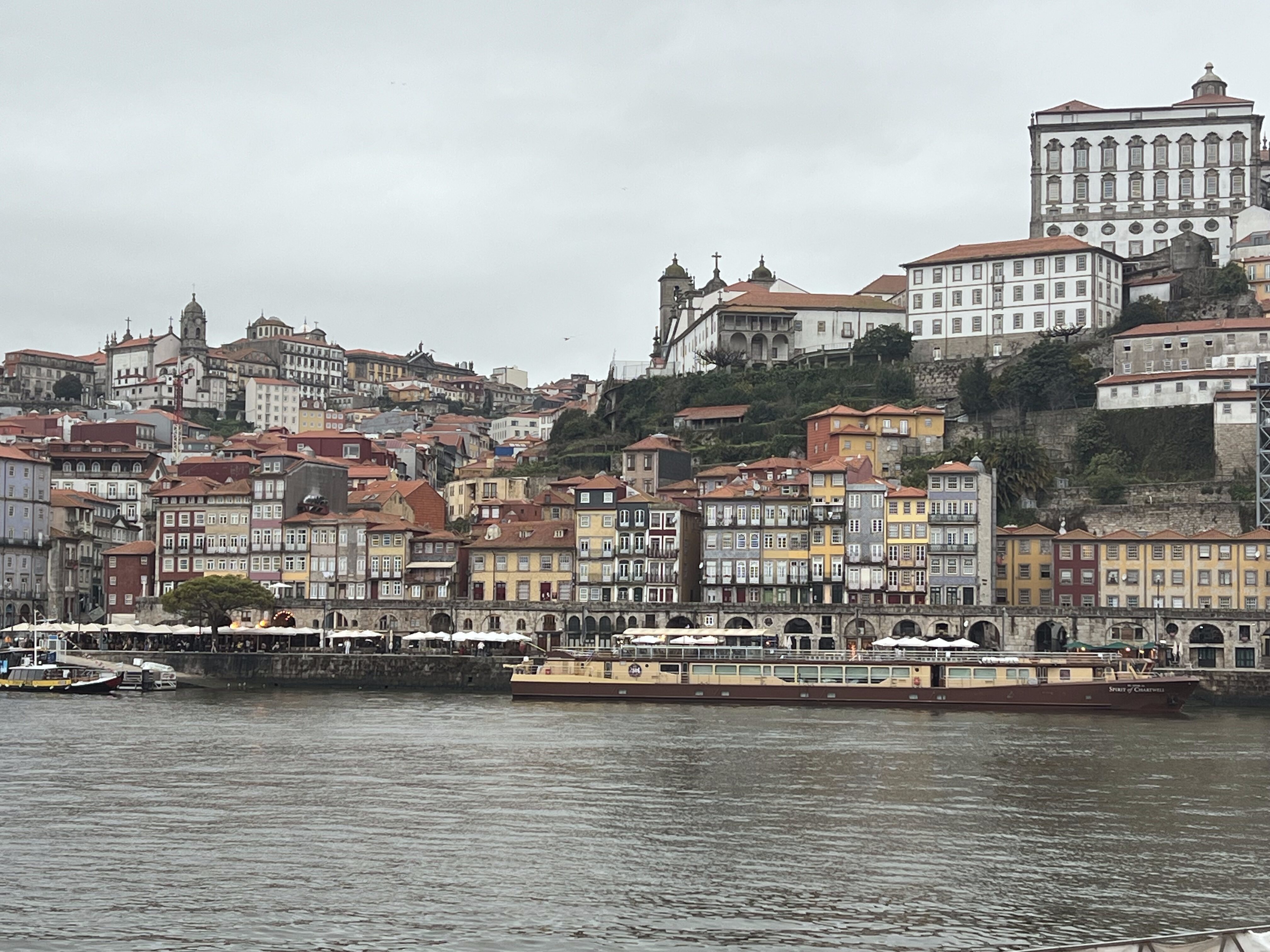
One morning, we braved the line at Café Majestic, a Belle Époque masterpiece with ornate mirrors, carved wood, and marble tabletops. Their pastéis de nata—crisp custard tarts dusted with cinnamon—paired perfectly with Portuguese coffee (stronger and smaller than American versions).
We tried to be inspired as writers here, just as J. K. Rowling was when she visited this café whilst living in the city and wrote some of her early drafts of Harry Potter and the Philosopher’s Stone here. Only time will tell!
Our favorite spot in Porto was Cais da Ribeira. Sitting at a riverside café, watching people as the city buzzed around us, was truly magical. Even in the rain, locals greeted each other and paused to admire the bridge. Street musicians played their music, which mixed with the sound of the rain to create Porto’s unique vibe.
Beyond tourist attractions, we glimpsed authentic local life by visiting Mercado do Bolhão, Porto’s historic market recently restored to its 1914 glory. Elderly vendors arranged pyramids of fruits and vegetables with artistic precision. Fishmongers filleted bacalhau with lightning speed. Flower sellers created bouquets while gossiping about neighborhood news. One cheese vendor insisted we taste everything, explaining regional variations with passionate hand gestures despite our limited Portuguese.
WOULD WE GO BACK? ABSOLUTELY.
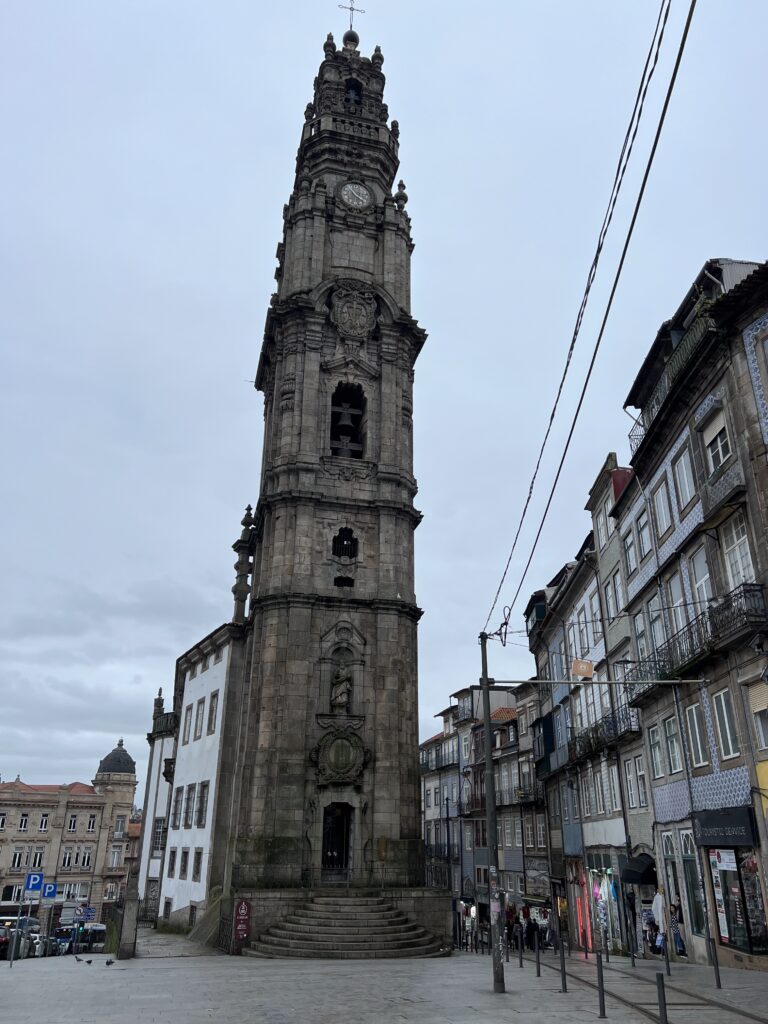
Beyond tourist attractions, we glimpsed authentic local life by visiting Mercado do Bolhão, Porto’s historic market recently restored to its 1914 glory. Elderly vendors arranged pyramids of fruits and vegetables with artistic precision. Fishmongers filleted bacalhau with lightning speed. Flower sellers created bouquets while gossiping about neighborhood news. One cheese vendor insisted we taste everything, explaining regional variations with passionate hand gestures despite our limited Portuguese.
Porto left an impression on us. It wasn’t just the wine, the food, or the history—it was the way the city felt alive. Next time, we’d linger longer in Ribeira, spend more nights by the river, and let Porto’s energy pull us even deeper into its magic.
Porto left an impression on us. It wasn’t just the wine, the food, or the history—it was the way the city felt alive. Next time, we’d linger longer in Ribeira, spend more nights by the river, and let Porto’s energy pull us even deeper into its magic.
We’d schedule our next visit during the São João Festival in late June, when Porto celebrates its patron saint with an all-night party featuring plastic hammers (traditionally used to lightly tap strangers’ heads for good luck), grilled sardines, paper lanterns, and fireworks over the Douro. Locals described this festival as Porto’s soul expressing itself through communal celebration—something we’d love to experience.
We’d also allocate more time for day trips—to Guimarães, Portugal’s first capital with its well-preserved medieval center; to Braga, home to the spectacular Bom Jesus do Monte sanctuary with its monumental baroque stairway.
Most importantly, we’d return with greater Portuguese language skills. Though English served us adequately in tourist situations, meaningful connections with older locals proved challenging. Simple Portuguese phrases opened doors to authentic experiences—shopkeepers’ family stories, elderly neighbors’ historical anecdotes, fishermen’s tales of changing river conditions over decades. These personal interactions, more than any attraction, revealed Porto’s true essence.
Porto captured our hearts through its contradictions—simultaneously grand and humble, ancient and evolving, touristic and authentic. The city embodies Portuguese resilience, transforming economic challenges into creative opportunities while preserving cultural heritage. Its physical beauty—terraced buildings reflecting in the Douro as evening light turns everything golden—creates visual memories that linger long after departure.
Beyond all else, Porto taught us to embrace unpredictability—rainy days leading to unexpected discoveries, wrong turns revealing hidden viewpoints, casual conversations yielding insider recommendations. The city rewards curious travelers willing to abandon rigid itineraries and embrace spontaneous exploration. In Porto, the journey truly matters more than the destination—especially when that journey involves hills, history, and generous pours of magnificent Port wine.
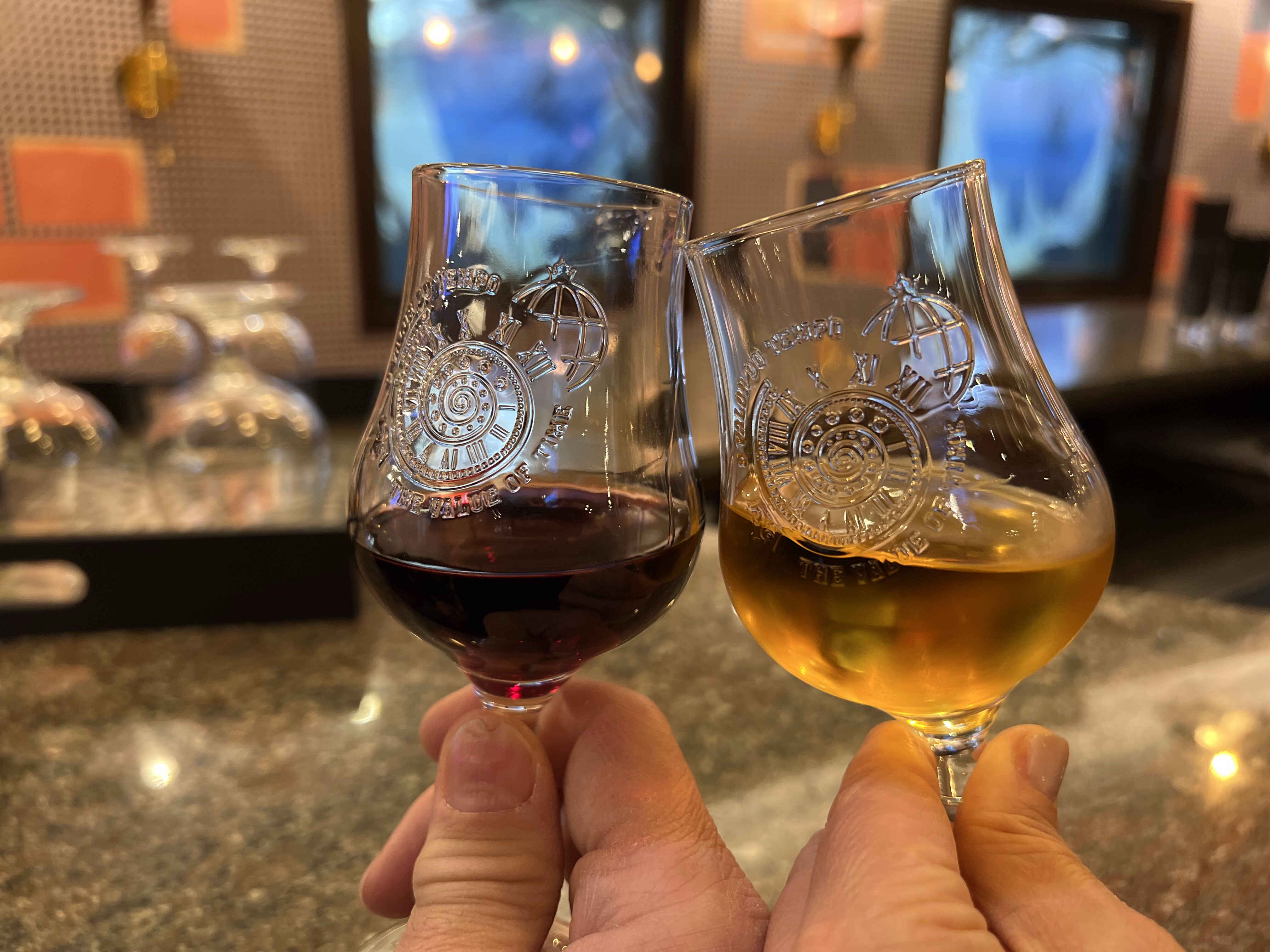
Have you visited Porto? What neighborhoods or experiences would you recommend for our return visit?
